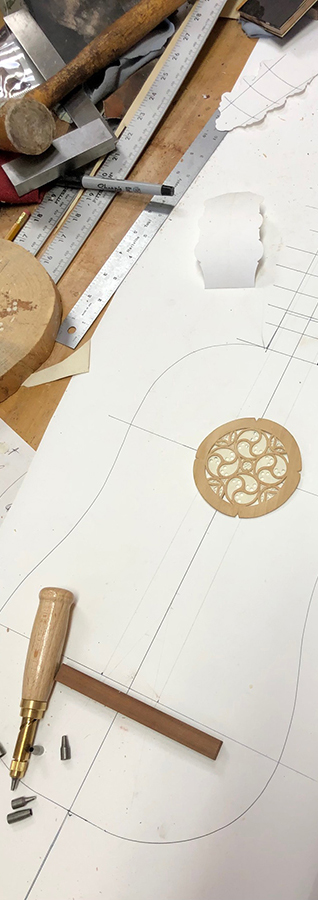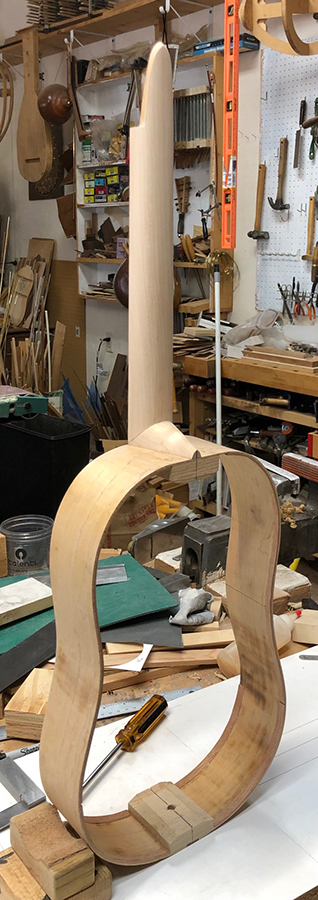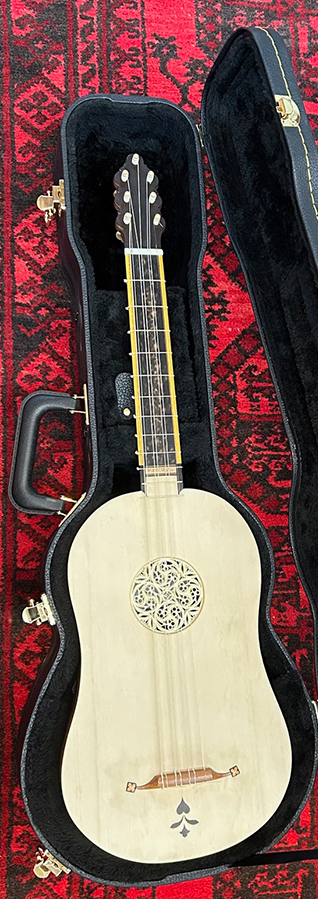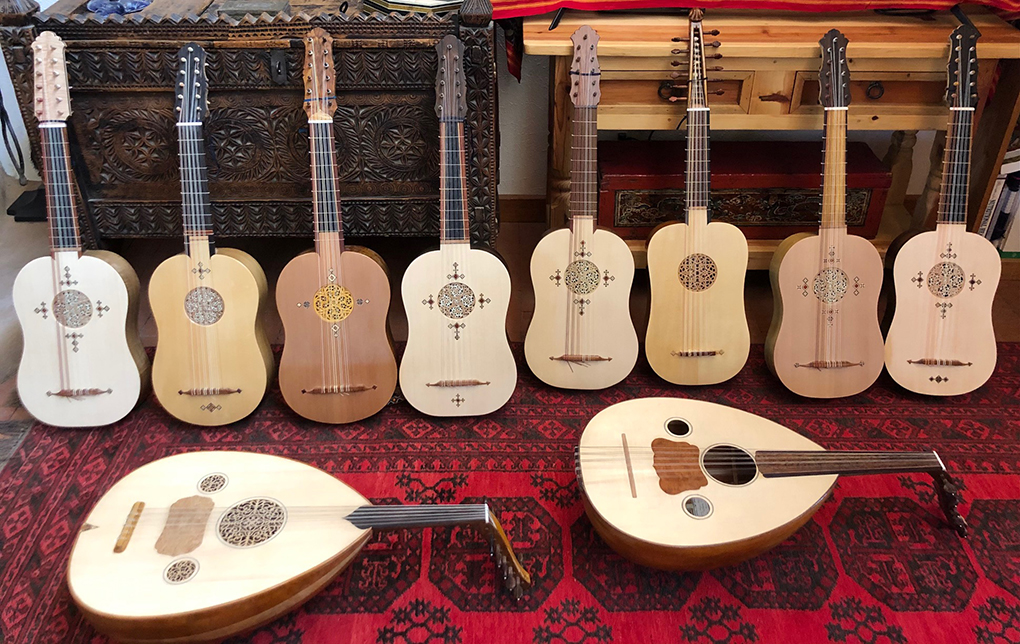THE PROCESS
All lutherie is a mix of science, art, and alchemy. There is inherited knowledge that we have from instruments already built, but every new instrument must be made with an instinctive understanding of how an individual piece of wood works. Glues and varnishes are part of the art of making wood into a singing, living thing but most of it is in the construction itself. Some instruments like Stradivarius violins have achieved the status of cult objects, but it has been proven over and over again through blind listening tests that modern instruments can be as good as, or surpass, masterworks of the past.
Lutherie is a Mix of Science, Art, and Alchemy.
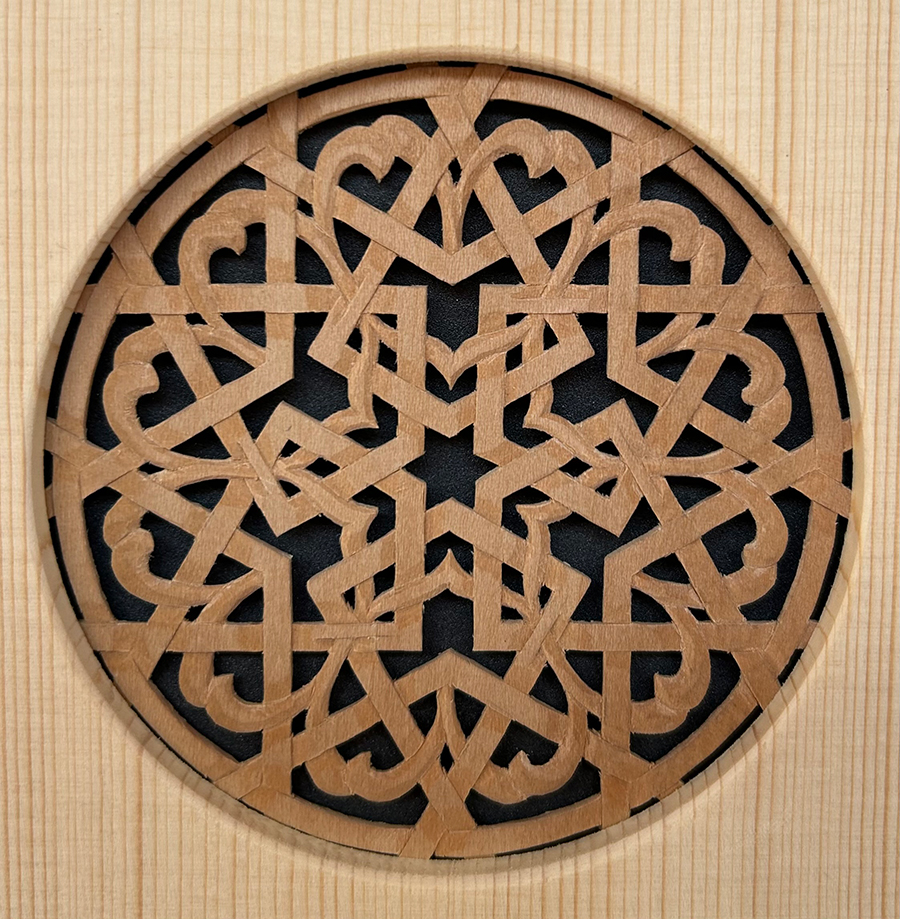
In many ways the vihuela is a lute in guitar’s clothing, and is one of the earliest ancestors of the guitar as we know it. There was a lot of very elegant music written for vihuela, much of which is played by classical guitar players without knowing its original source. Vihuelas are often made with inlaid marquetry work in the soundboard that recalls Moorish oud design. I have long been intrigued with the vihuela and have concentrated a lot of my lutherie work on them for years. Both lutes and vihuelas are remarkably light, almost feather-weight compared to a typical guitar. The plucked stringed instruments of the Renaissance were not very loud, but possess a compelling subtlety of sound.
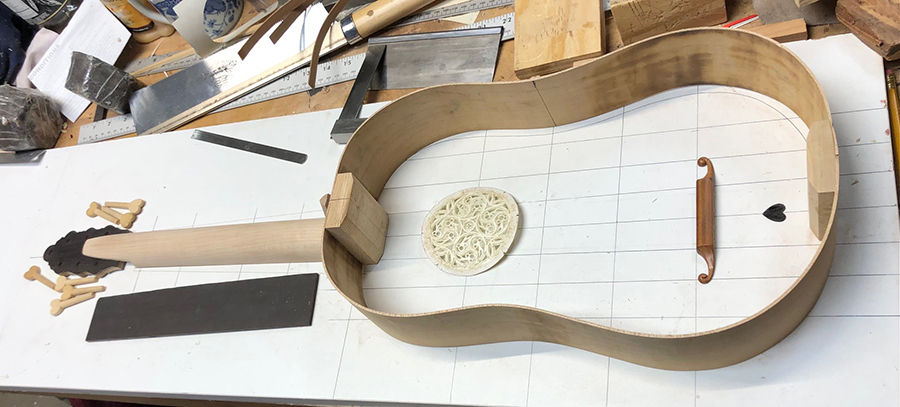
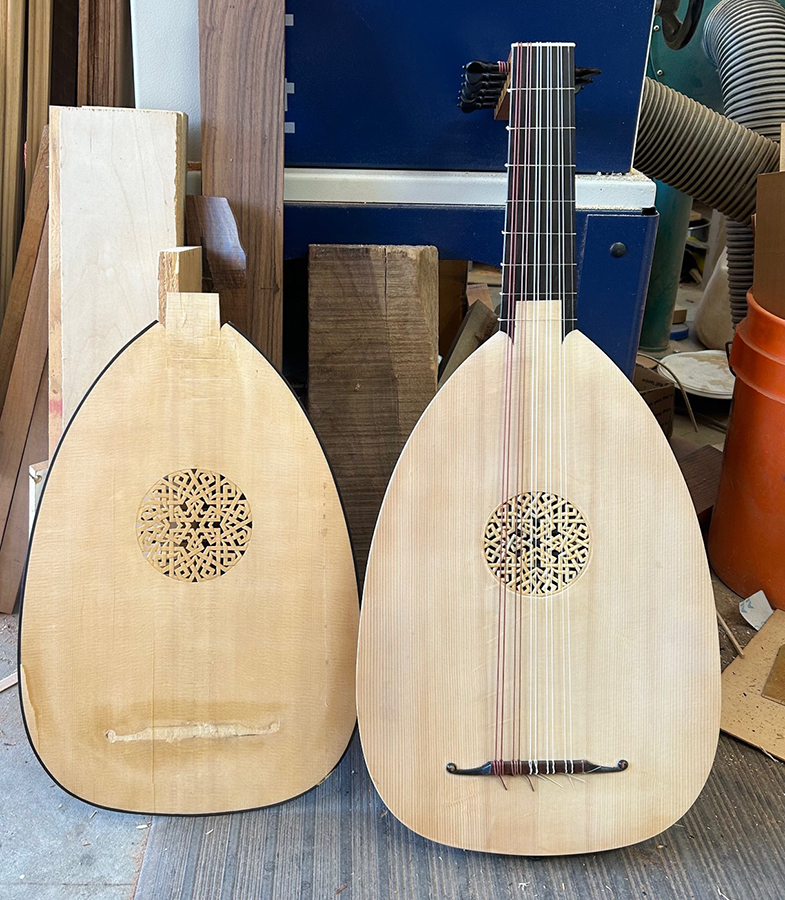
Lutes have an intrinsically beautiful shape originally based on Pythagorean geometries. The construction of a lute’s resonator is a marvel of woodworking. It is made of very thin staves, bent into shape over a faceted mold. The best soundboards are mostly Alpine spruce like Cremona violins, but Canadian and Carpathian spruce also make excellent instruments. The soundboard is pierced with a lace-like rosette, not an open sound hole like guitars have. This rosette also recalls Arabic instrument making traditions from which lutes and guitars are descended.
The word for stringed instrument making, “lutherie”, shows how fundamental the lute has been in Western music. There was a reason why the lute was the most important instrument in the Western musical tradition for some 400 years. There was an enormous repertoire, ranging from simple popular songs and dances to the most refined court music. For me, the 6-course lute of the Renaissance is an epitome of elegant design, and its vast corpus of surviving music is an epiphany of the culture of the era.
